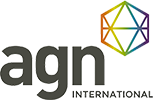Ensure Success with Business Process Mapping
 When it comes to implementing an ERP system successfully, business process mapping can be a helpful tool. From a high-level perspective, business process maps can be likened to GPS directions - they provide the best way to arrive at your final destination, i.e. ERP implementation or any process that might occur in your organization.
When it comes to implementing an ERP system successfully, business process mapping can be a helpful tool. From a high-level perspective, business process maps can be likened to GPS directions - they provide the best way to arrive at your final destination, i.e. ERP implementation or any process that might occur in your organization.
What Constitutes a Process Map?
Before defining a process map, we need to establish what a process is. Generally speaking, a process is a series of related actions that lead to a particular result. A standard formula looks like this: Inputs + Process = Output(s). An example of some inputs are:
- Materials
- Machinery
- Methods
- Manpower / People
- Measurements
- Mother Nature
It’s important to note that inputs are not limited to the 6 M’s above, these are just common inputs in the process mapping world. Outputs can range from products to information, services, or even consequences.
A process map on the other hand ties all of the process activities together in an easy to read, easy to interpret visual. Simple, standard symbols are used to depict the actions an individual should take during the overall implementation, or manufacturing, process. Any process that needs to be taken should be documented and mapped regardless of its complexity to help ensure that no potential ‘consequences’ occur.
Benefits of Process Mapping
Aside from enabling an individual to learn an overall process quickly, process mapping offers manufacturers a variety of benefits. Some examples are:
- Process maps can be assembled rapidly, leading to quicker implementation
- Easily establish boundaries of a process
- Identify sub-optimized processes that can then be targeted with corrective actions
- Uncover and eliminate any bottlenecks
- Increase knowledge regarding variations in inputs and process times
Overall, process mapping is a valuable tool that can help target inefficiencies and other types of waste that can be eliminated in order to improve overall business workings.
Interested in learning more about process mapping and how it can benefit your organization? Click on the button to download Meaden & Moore’s “Effective Business Process Mapping is More Than a Simple Flowchart” whitepaper.







